According to the manual and the supplemental material, Corona Craftamatic CH1000 has 200 needles. It is a standard-gauge knitting machine, which means needles are spaced 4.5 mm apart. The machine was manufactured and introduced to the market in the 1960s.
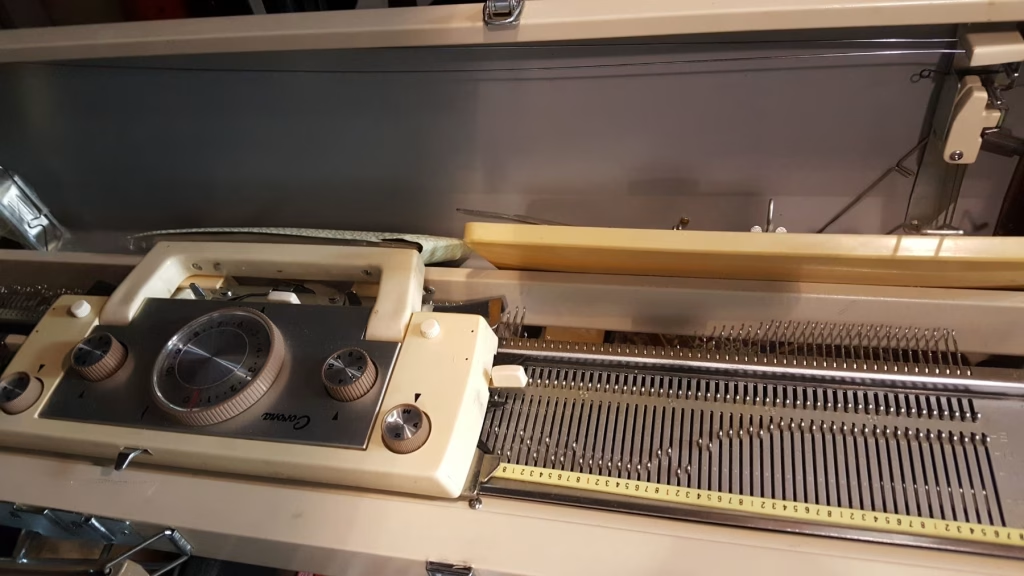
The row counter is of a vintage design – a round-ish display with a single slide-in panel.
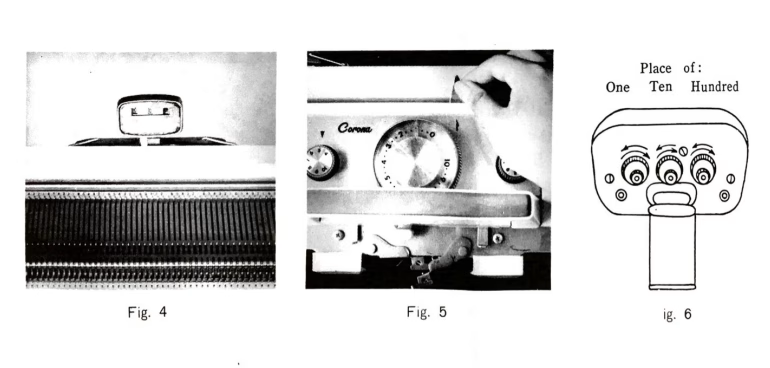
At first glance, it looks like a basic/manual knitting machine. However, the needle selection function is actually built into the carriage. In fact, the patterning mechanism (aka needle selection) and various levers and knobs and buttons are pretty unique for Corona knitting machines, which also makes Corona CH-1000 a unique machine with so many possibilities of patterning and needle selection.
The carriage has a pair of pattern control knobs (on both sides of the carriage ) with the positions marked as S, A and M.
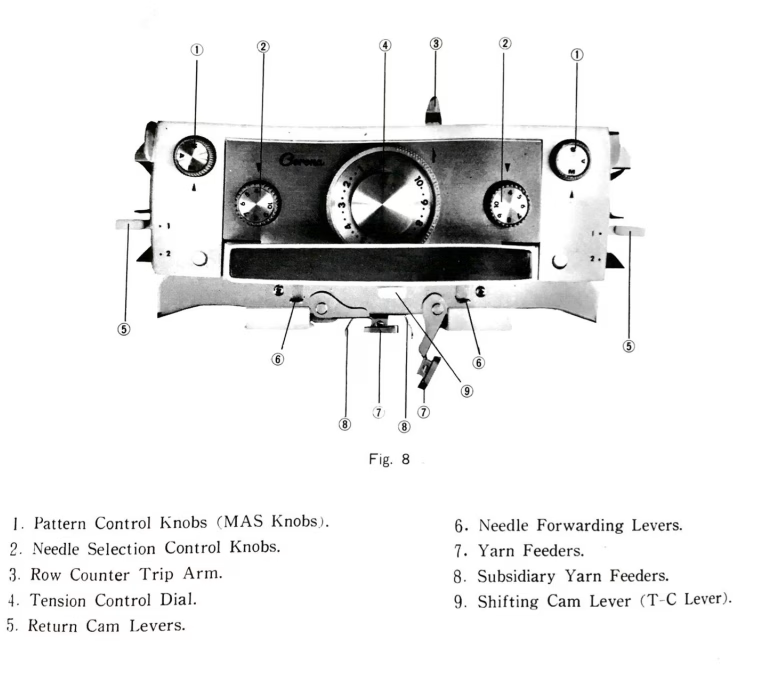
Refer to the manual, which explains how to choose the right positions for these knobs.
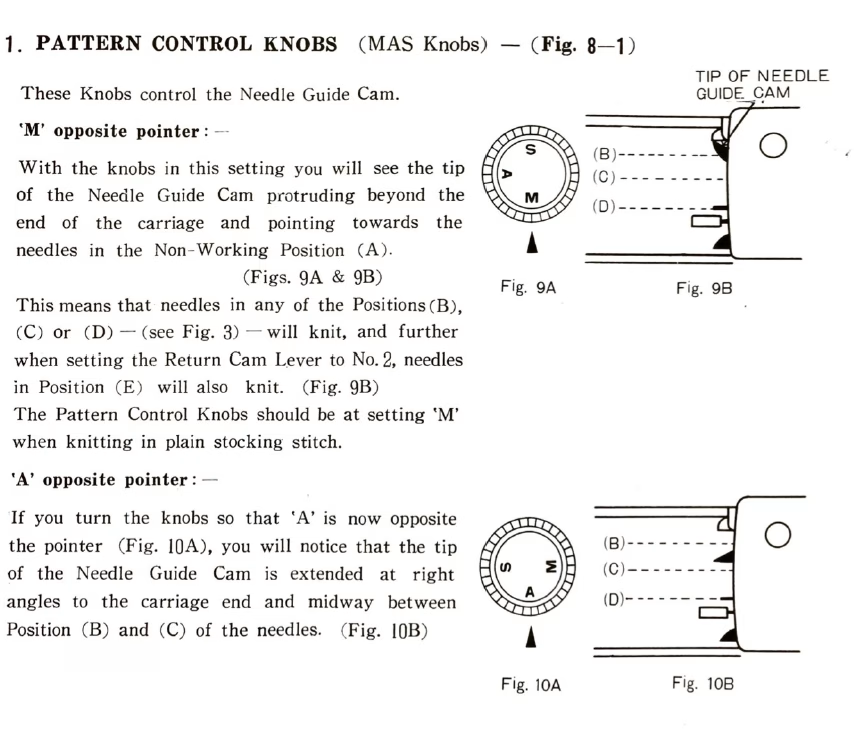
These knobs determine which needles (in positions B, C and/or D) are knitted or held. There is also a shifting cam lever on the front of the carriage with the positions T and C (“TC lever”). It determines whether the needles knit, hold, or “tuck” stitches. refer to the manual. “Return cam levers” are the levers on each side of the carriage, marked with positions 1 and 2. In position 1, needles in position E do not knit but needles in position D will knit. This lever is used for “partial knitting”.
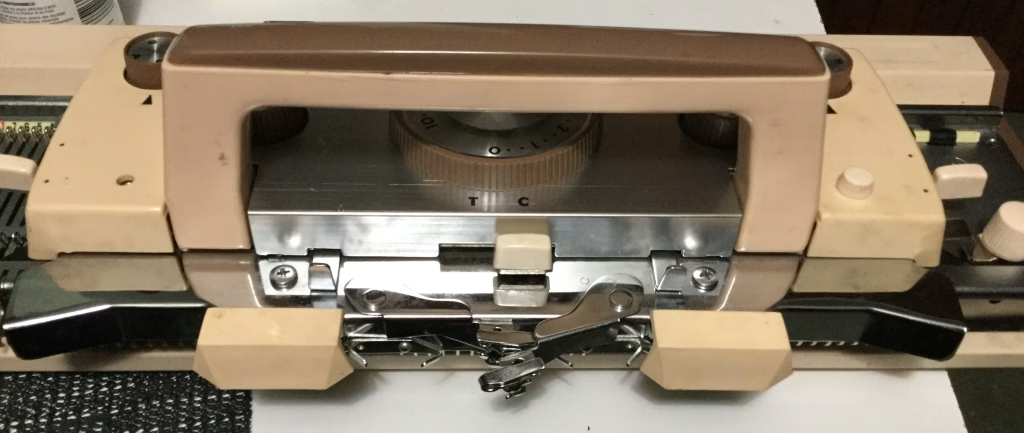
When the return cam lever is in position 1, needles in position E will knit. Thus, when the Pattern control knob is in position M, all needles in working positions will knit.
The carriage also has the needle selection control knobs with numbers 1 through 10.
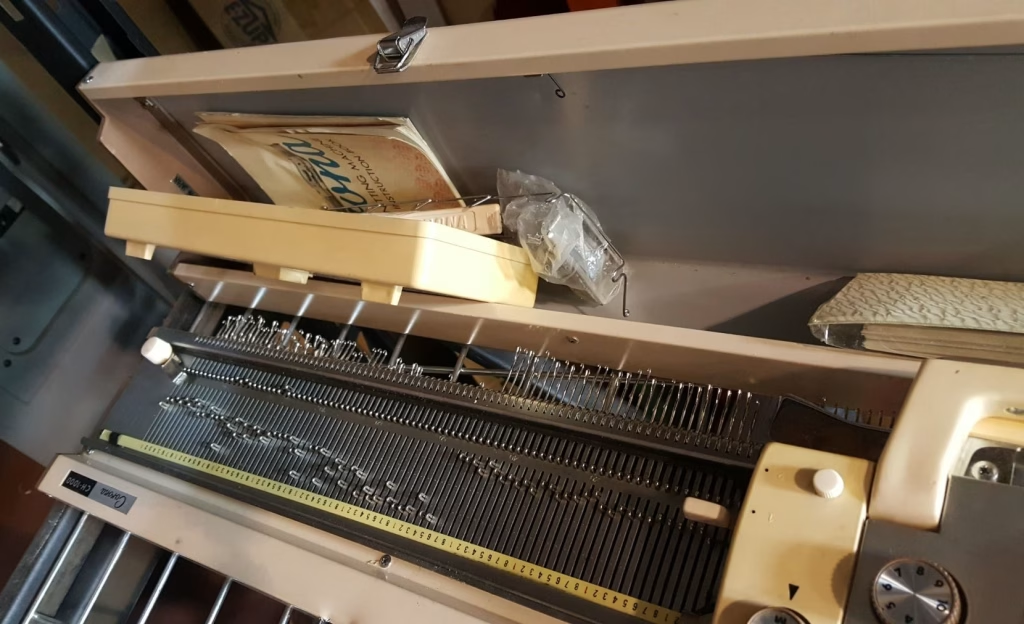
These knobs define the automatic selection of the needles. So in a way, this machine can be classified as a “turn-knob” knitting machine.
The sinker-plate part of the carriage also includes the “needle forwarding levers” (marked with blue in the picture below). These levers bring the needles forward into the E position when the carriage is moved while the corresponding (to the direction of the move) levers is pushed.
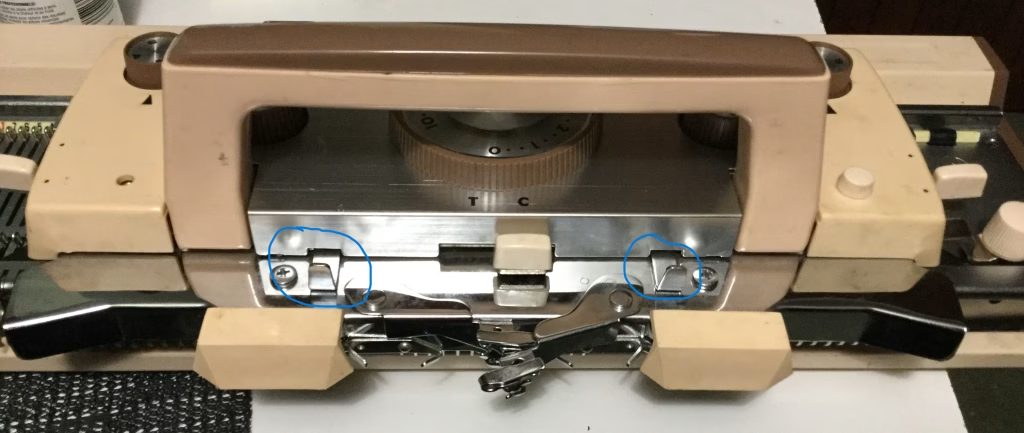
The machine is supplied with pattern cards to knit the patterns. The “needle selection knob” position is on the top of the grid n the card. At the bottom of the card: 1) the first column shows the position of the pattern control knobs marked with M, A, and/or A (in the case of both cards below, it is an “A”); 2) the second column shows the position of the shifting cam lever (the lever on both sides of the carriage): “T” and/or “C”;
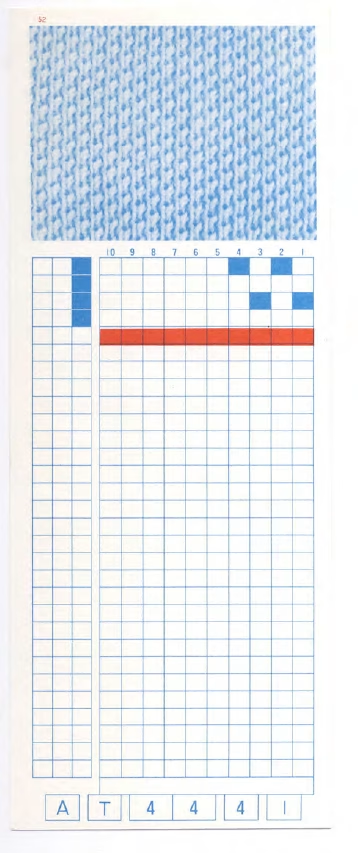
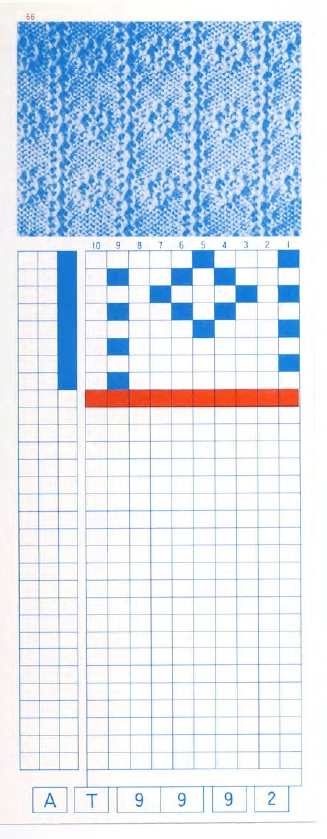
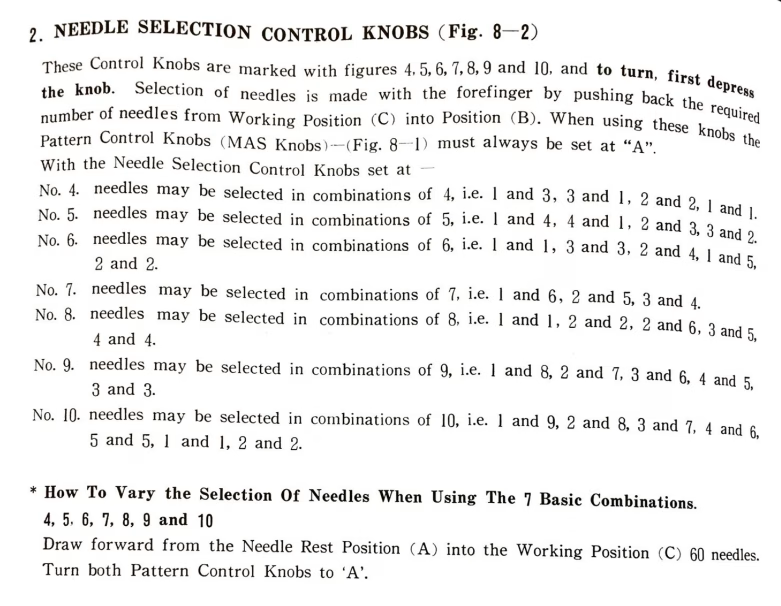
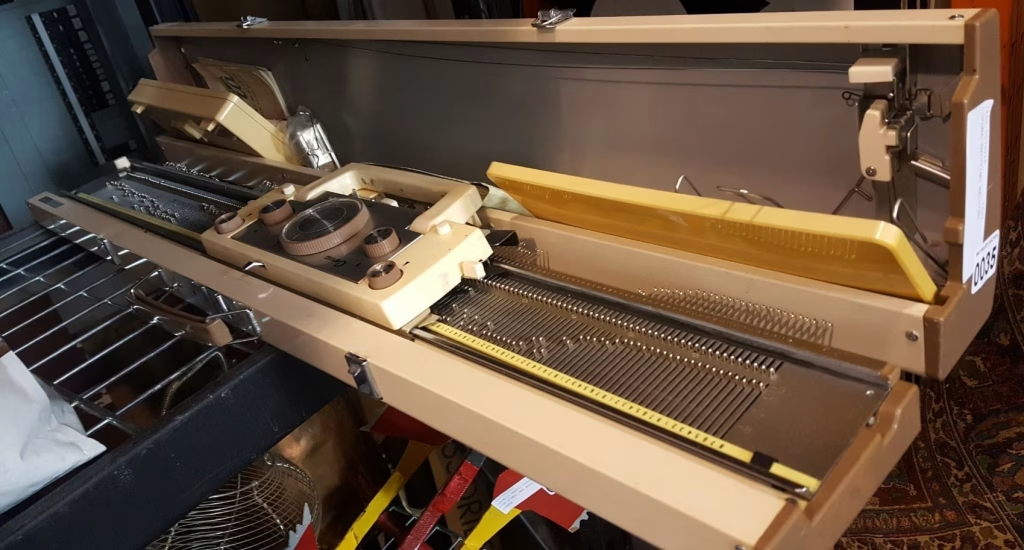
Like most knitting machines, Corona CH1000 requires a sponge in the retaining bar. However, similar to other Corona knitting machines, Corona CN-1000 does not have your typical sponge strip inside a retaining bar but (according to the manual and other Internet resources) has dampeners- one a wide strip for the sinker plate and one like a cord for needle movement control. Also, it is not as easy to replace them as for Brother and Singer/Silver Reed/Studio knitting machines because the end caps need to be removed.
It also has a metal rod that needs to be removed to change needles. In addition to these two, Corona CH1000 has sinker movement dampeners (one is like a wide felt fabric and another one is cord-like) that need to be replaced on old (not recently serviced) machines.
The carriage is capable of accepting two various yarns at the same time for fair isle and other color knitting. For weaving, it is recommended to use “subsidiary yarn feeders”.
Combinations of all these steps, levers and knobs seem complicated. However, it offers the machine so many possibilities, especially to hand-knitters who are not ready to give up the satisfaction of hand-manipulating the stitches but want to knit basic panels faster.
The Internet offers a lot of resources on this machine, including manuals and videos (all for free).
Knitting machines with similar patterning capabilities are Corona CH-501 (although much fewer levers and knobs), CH-707, CH-1500, CH-1600, CH-1700 and CH-1800.